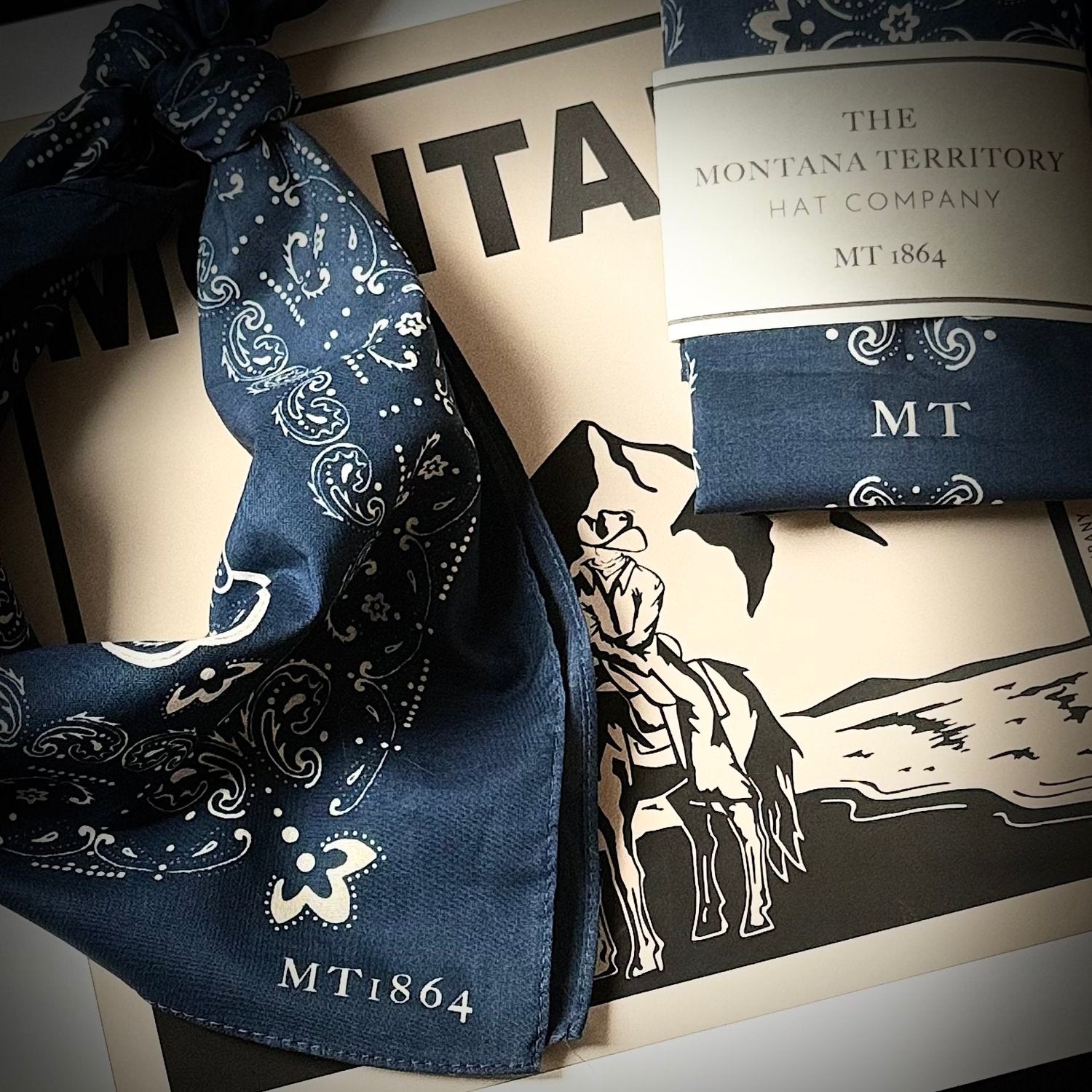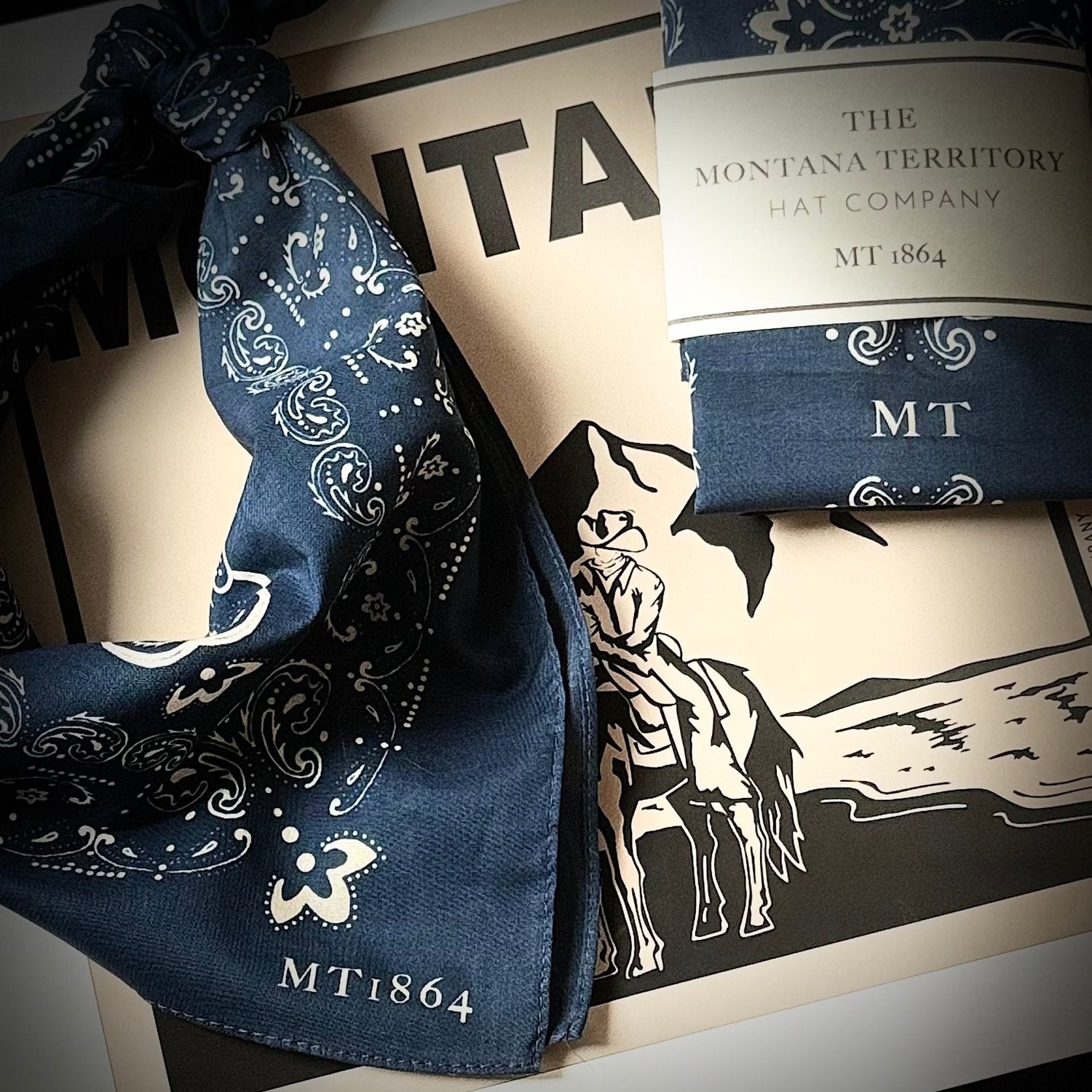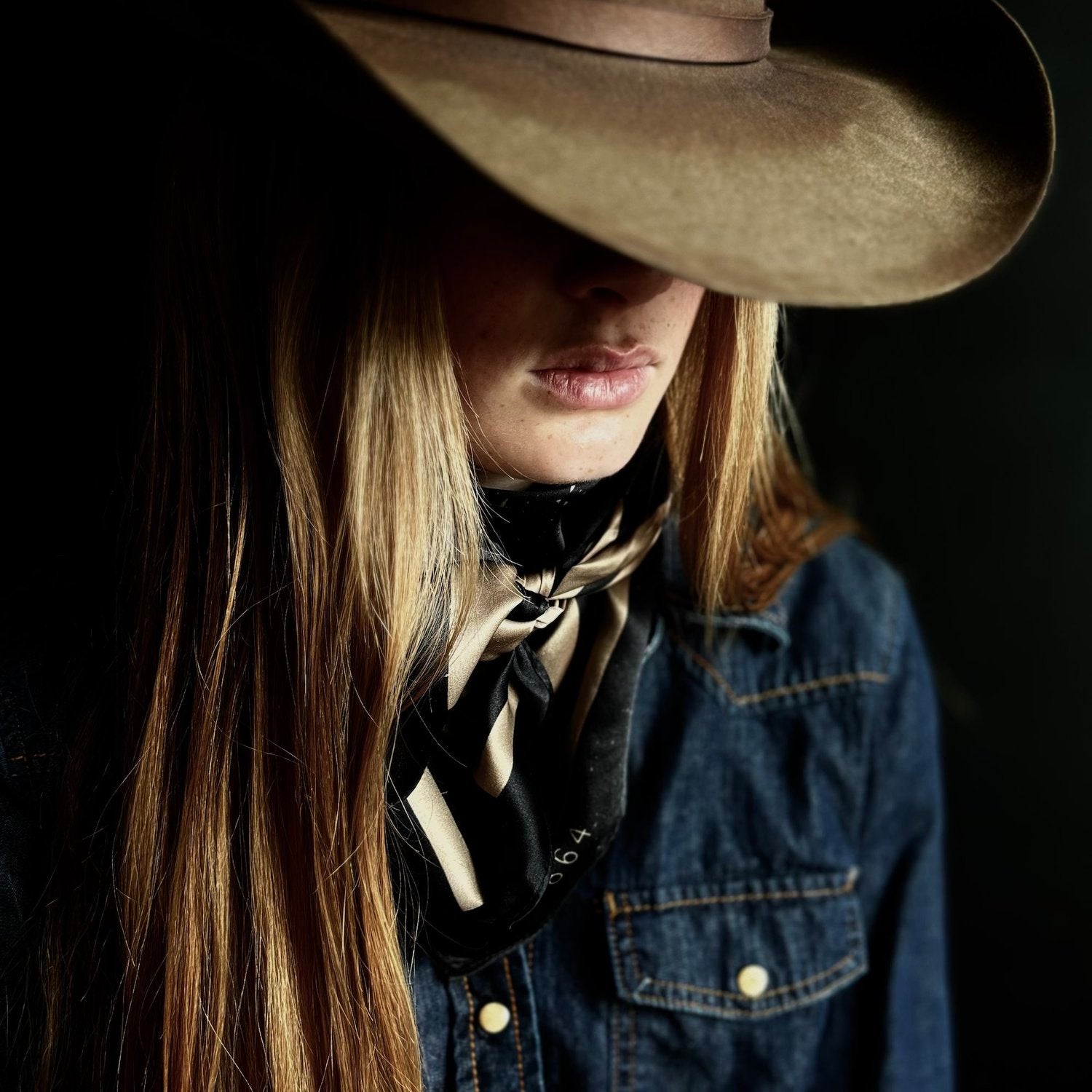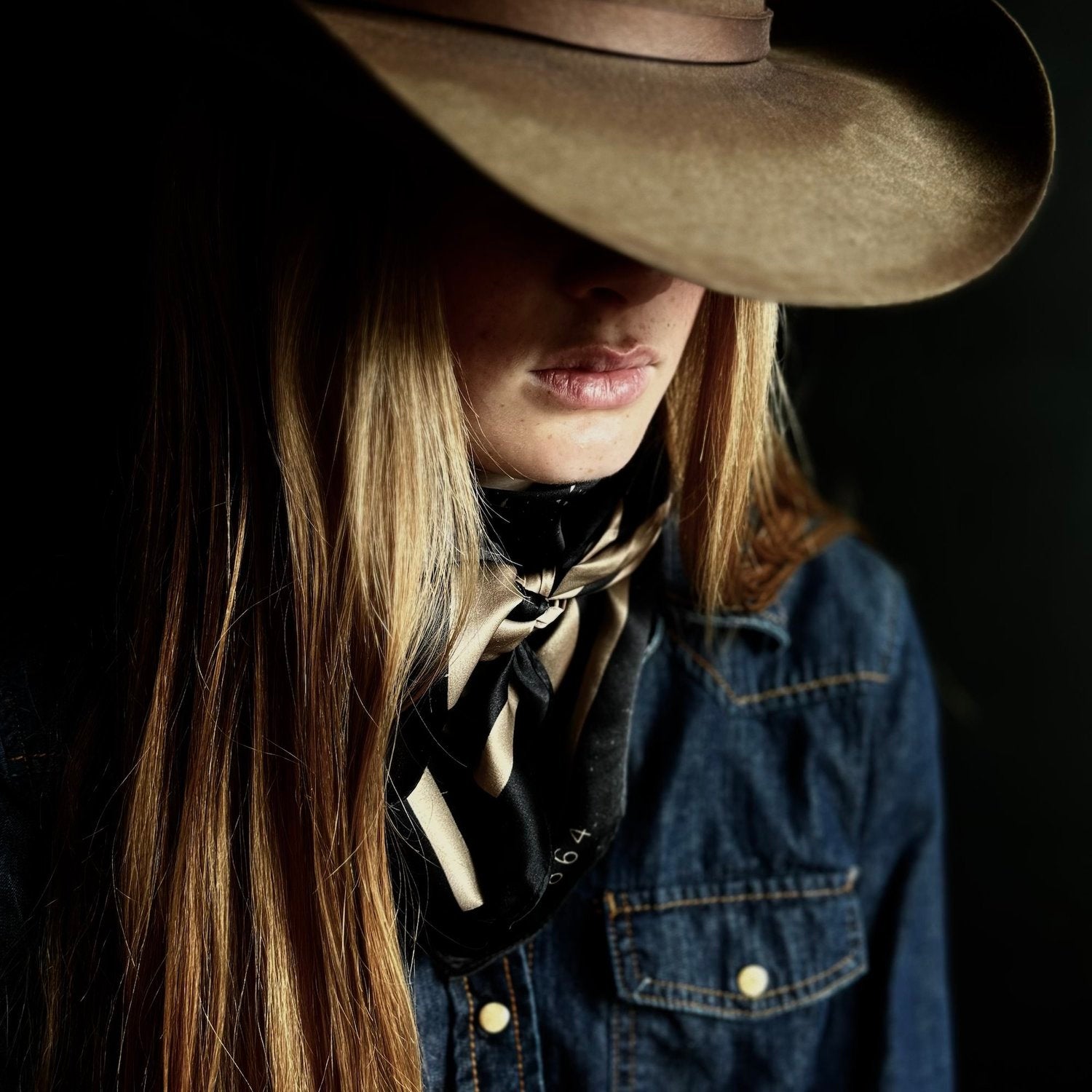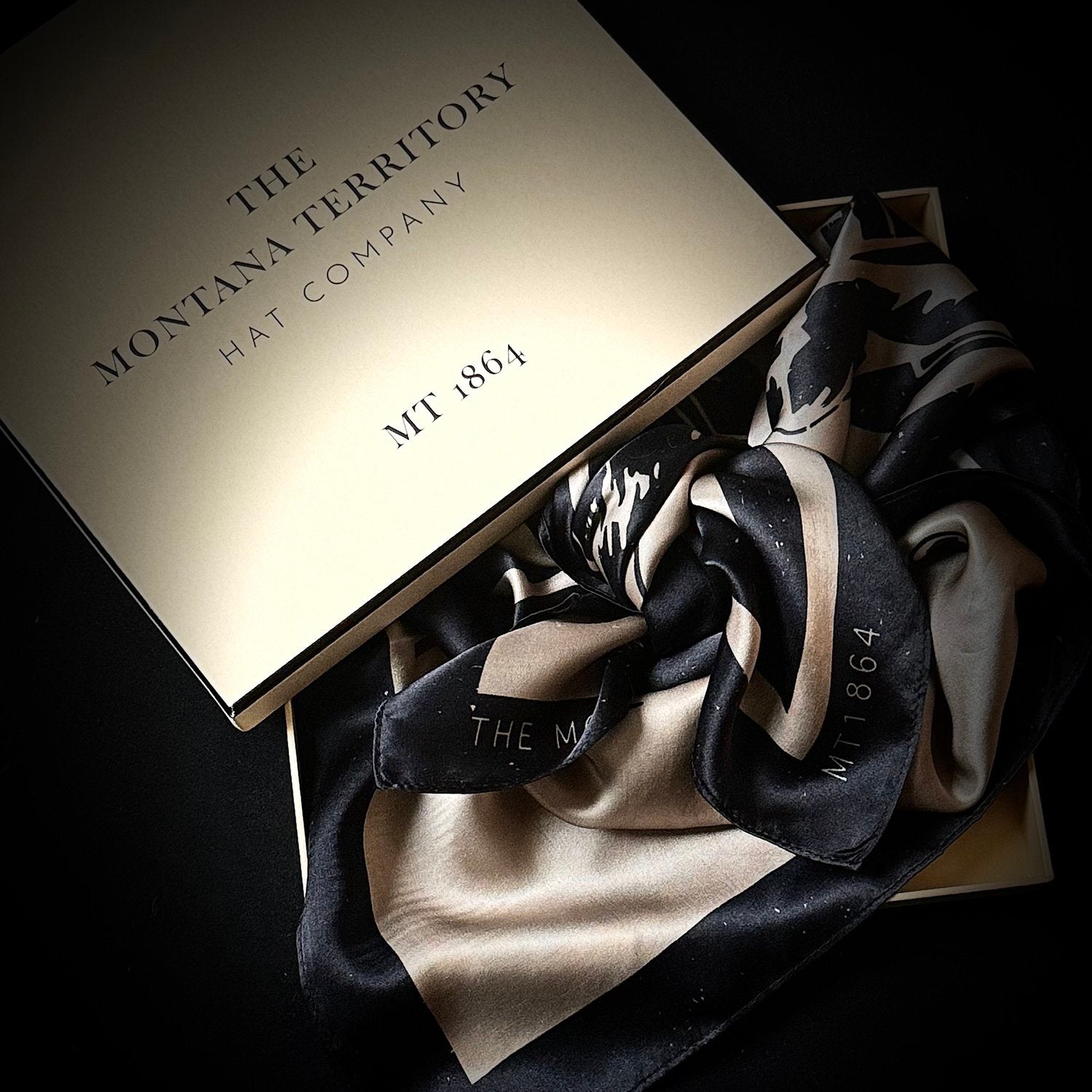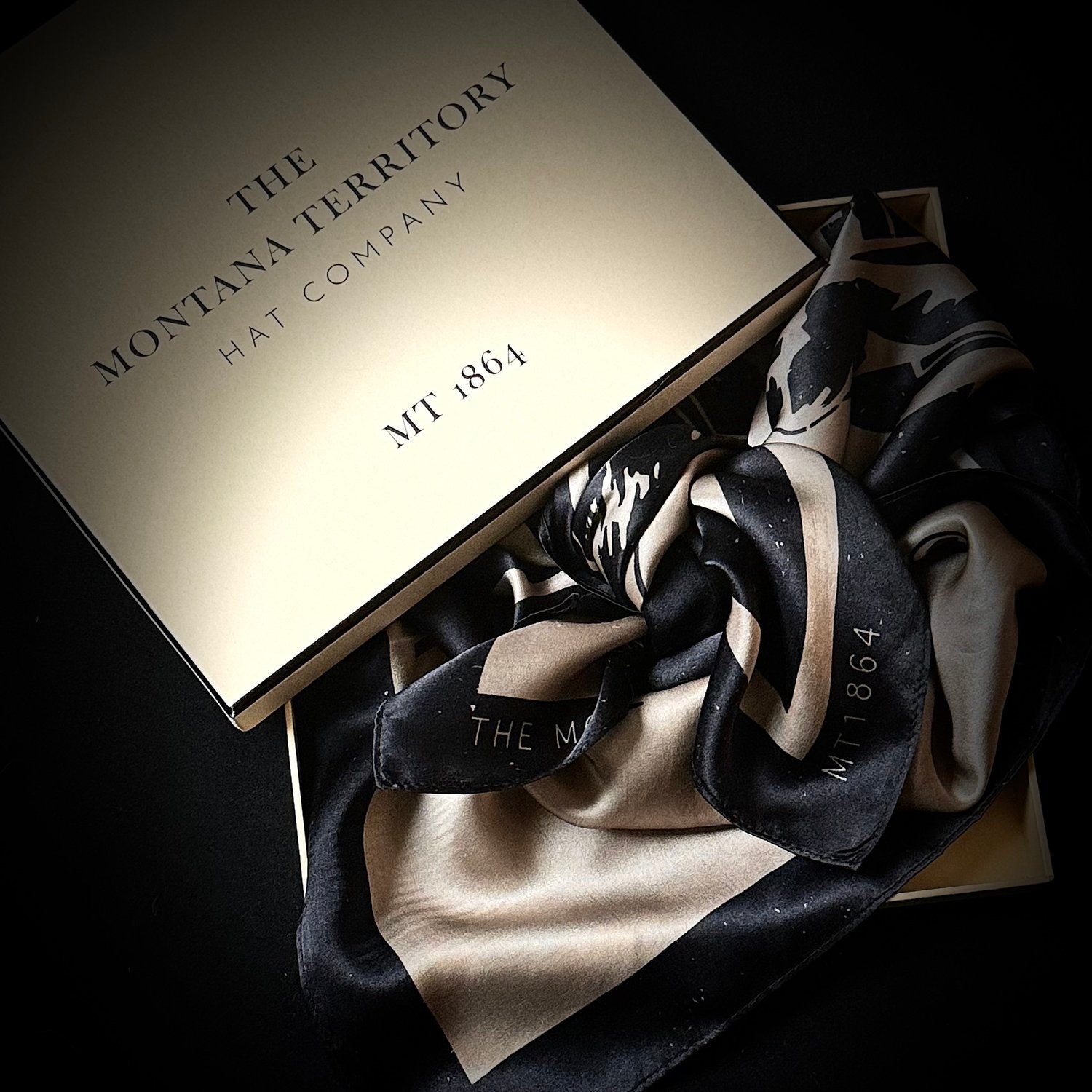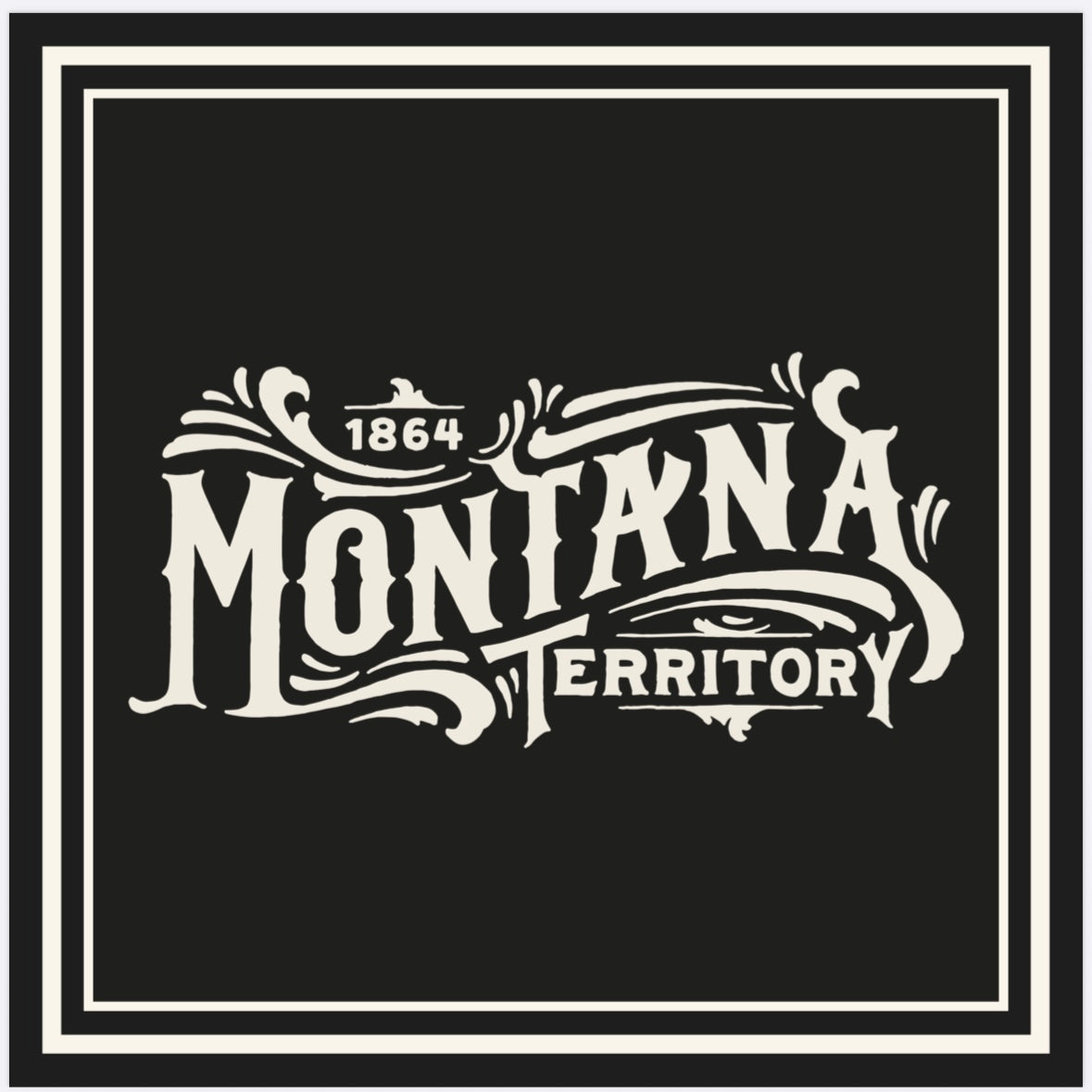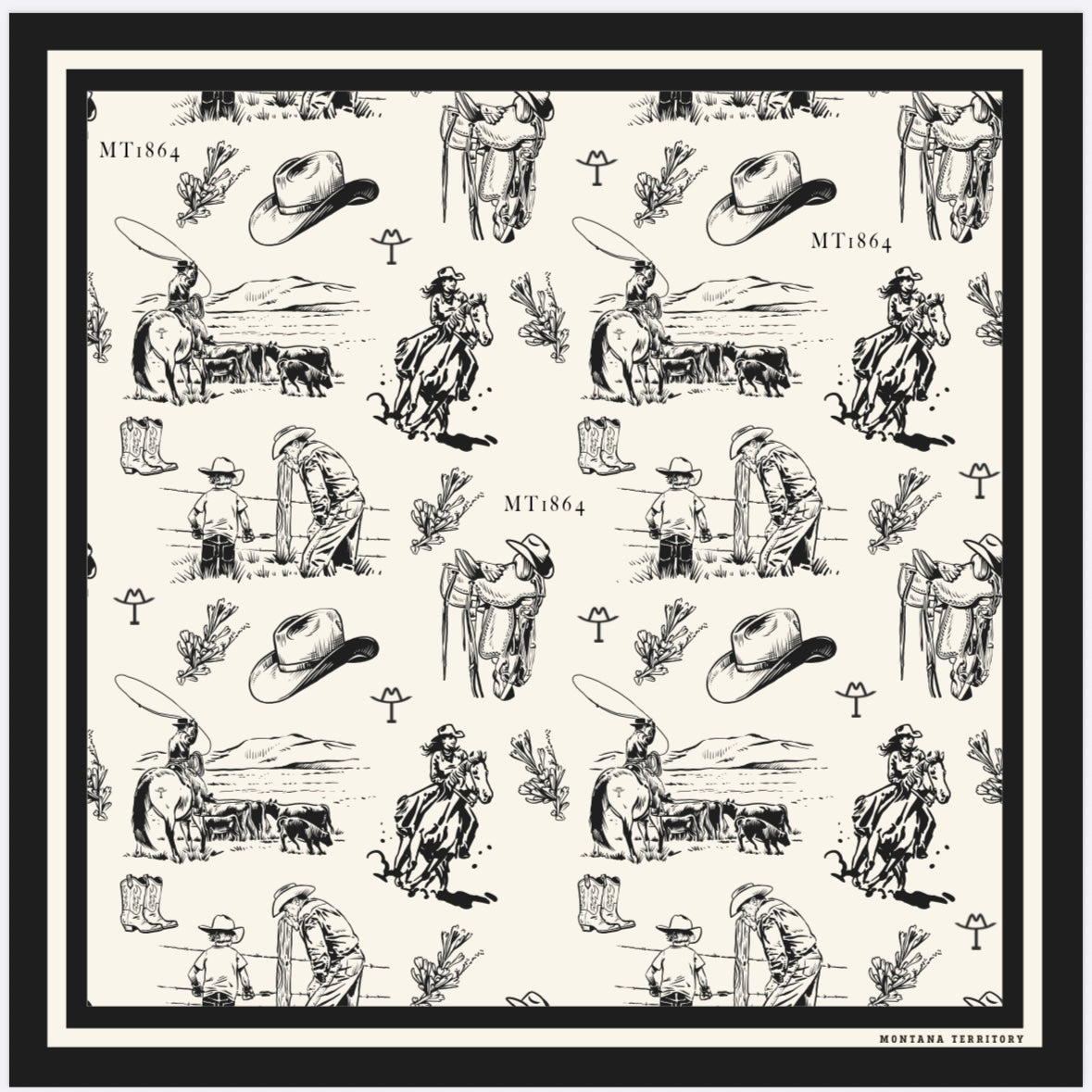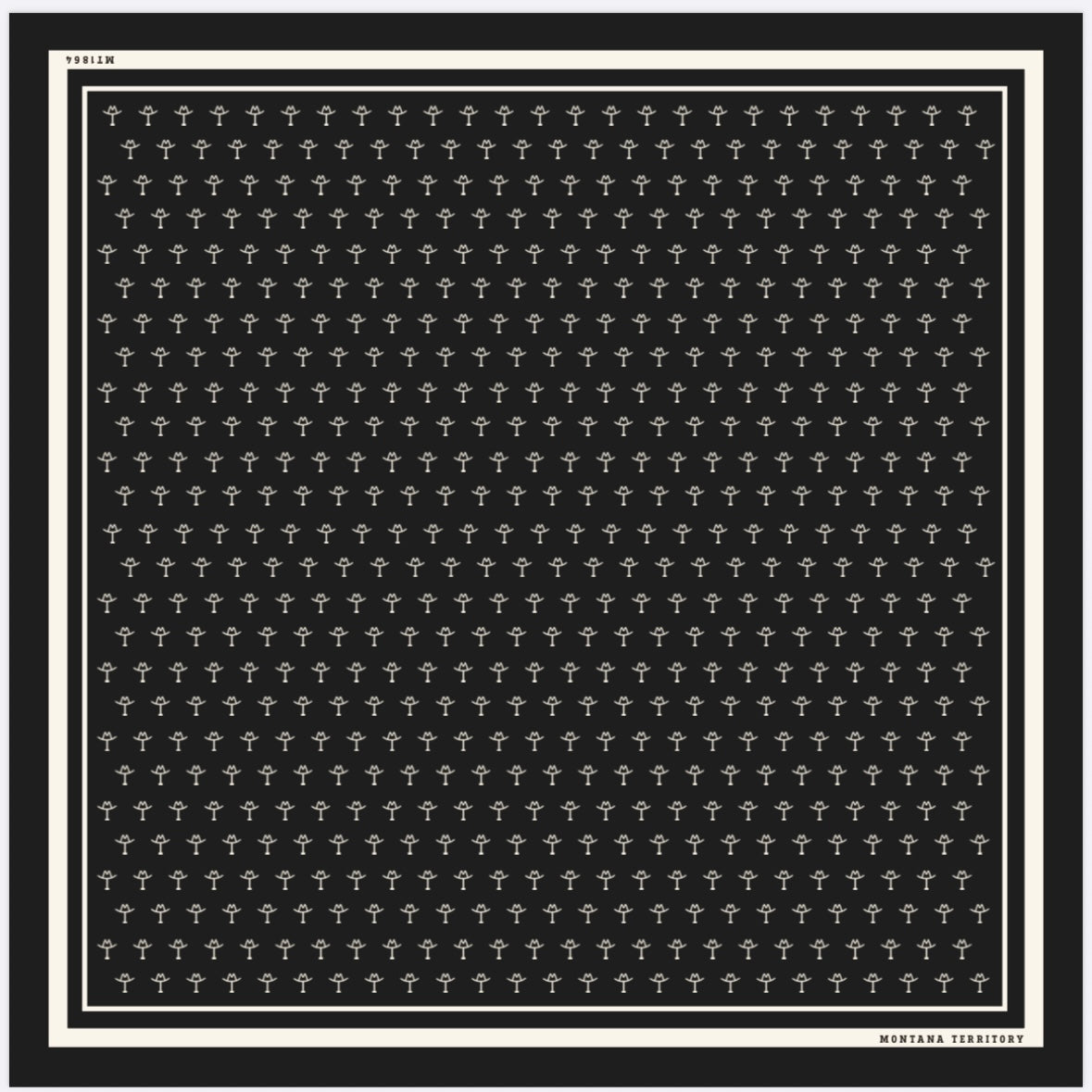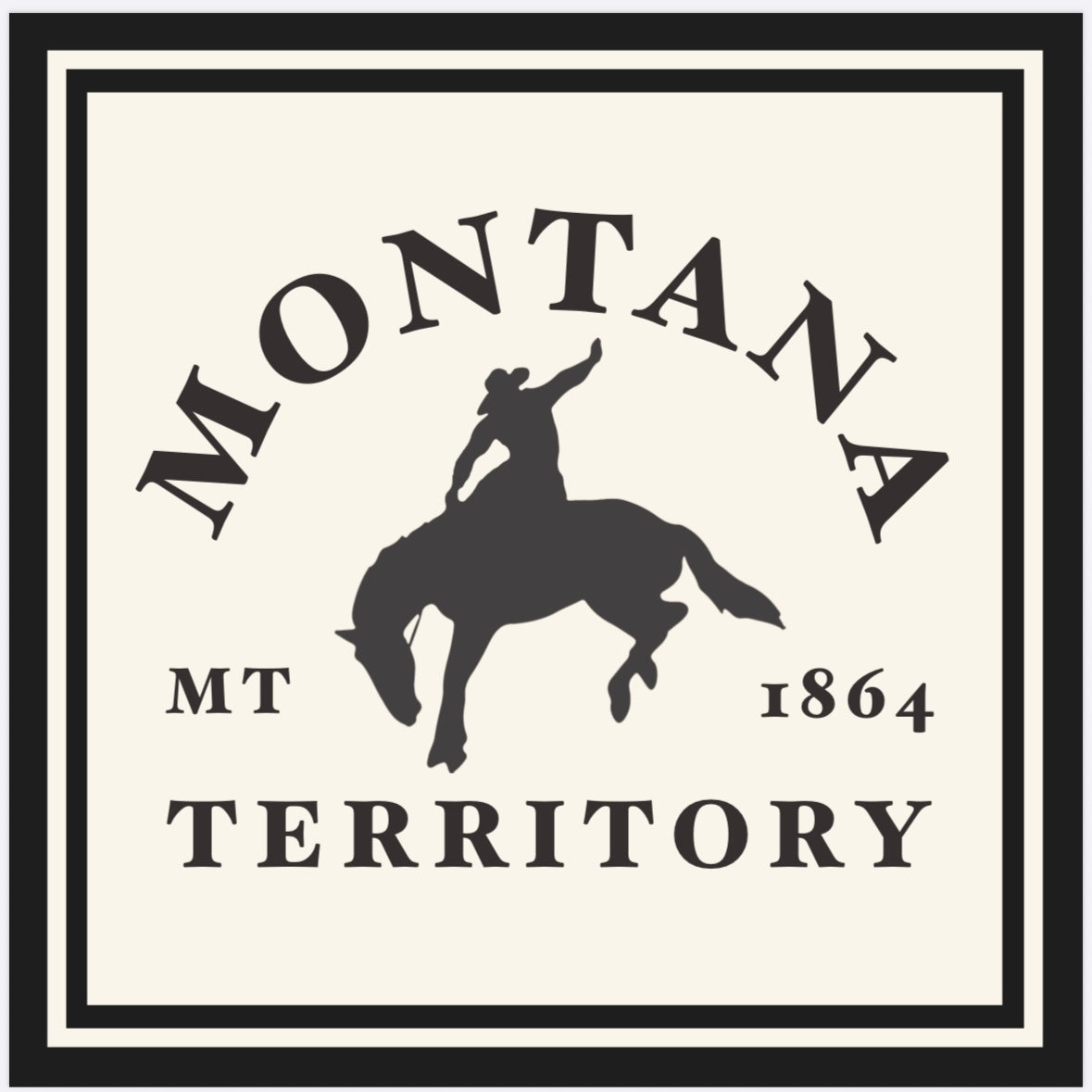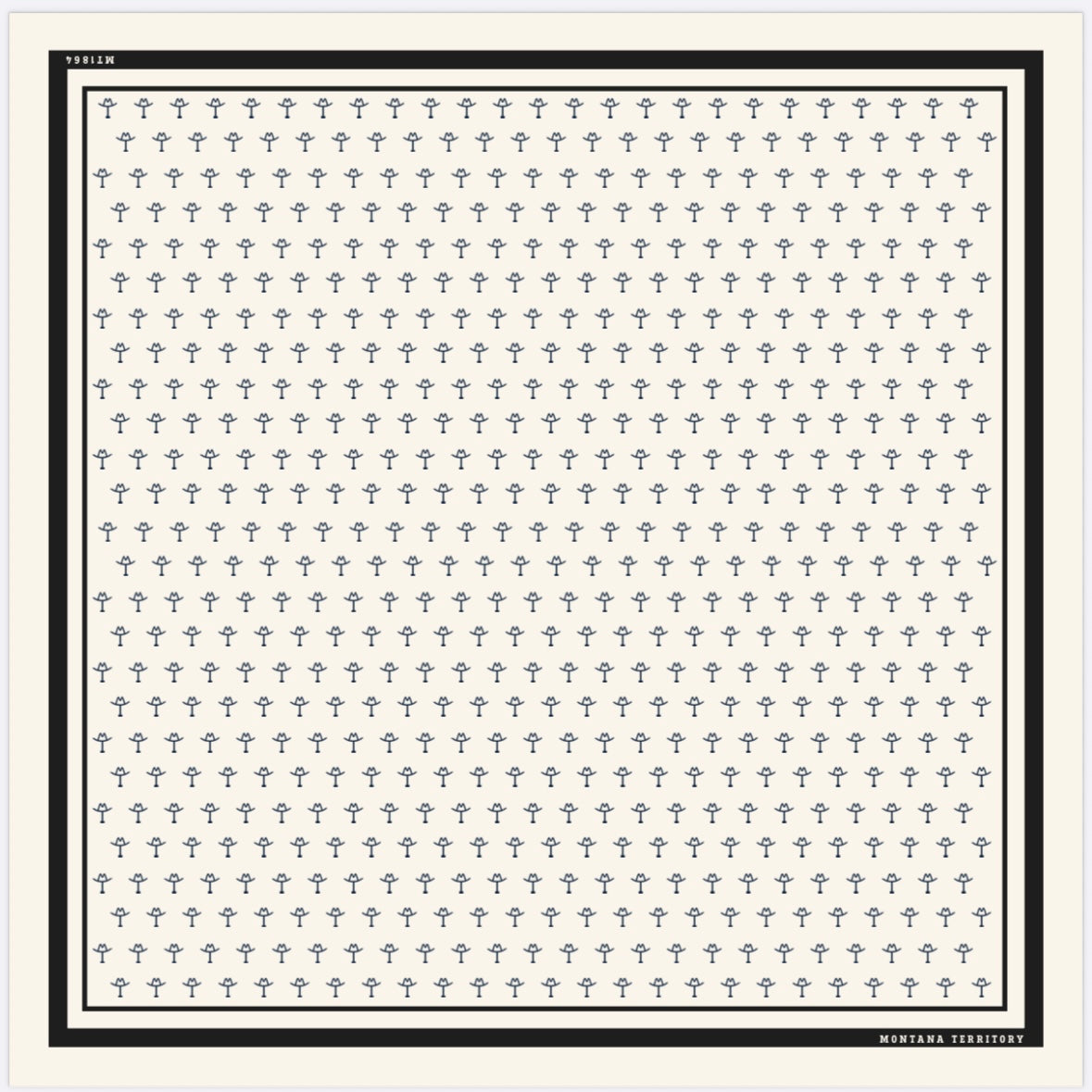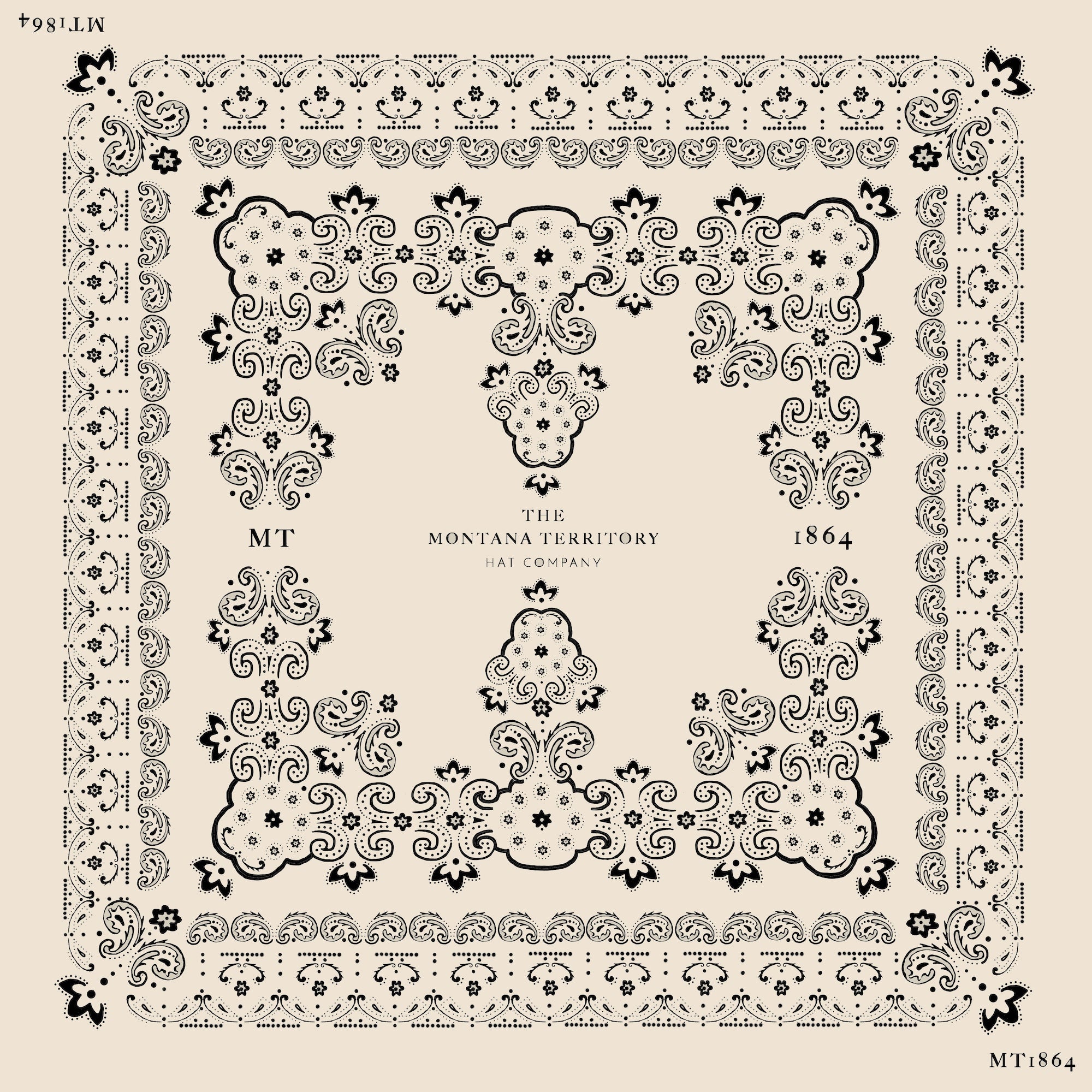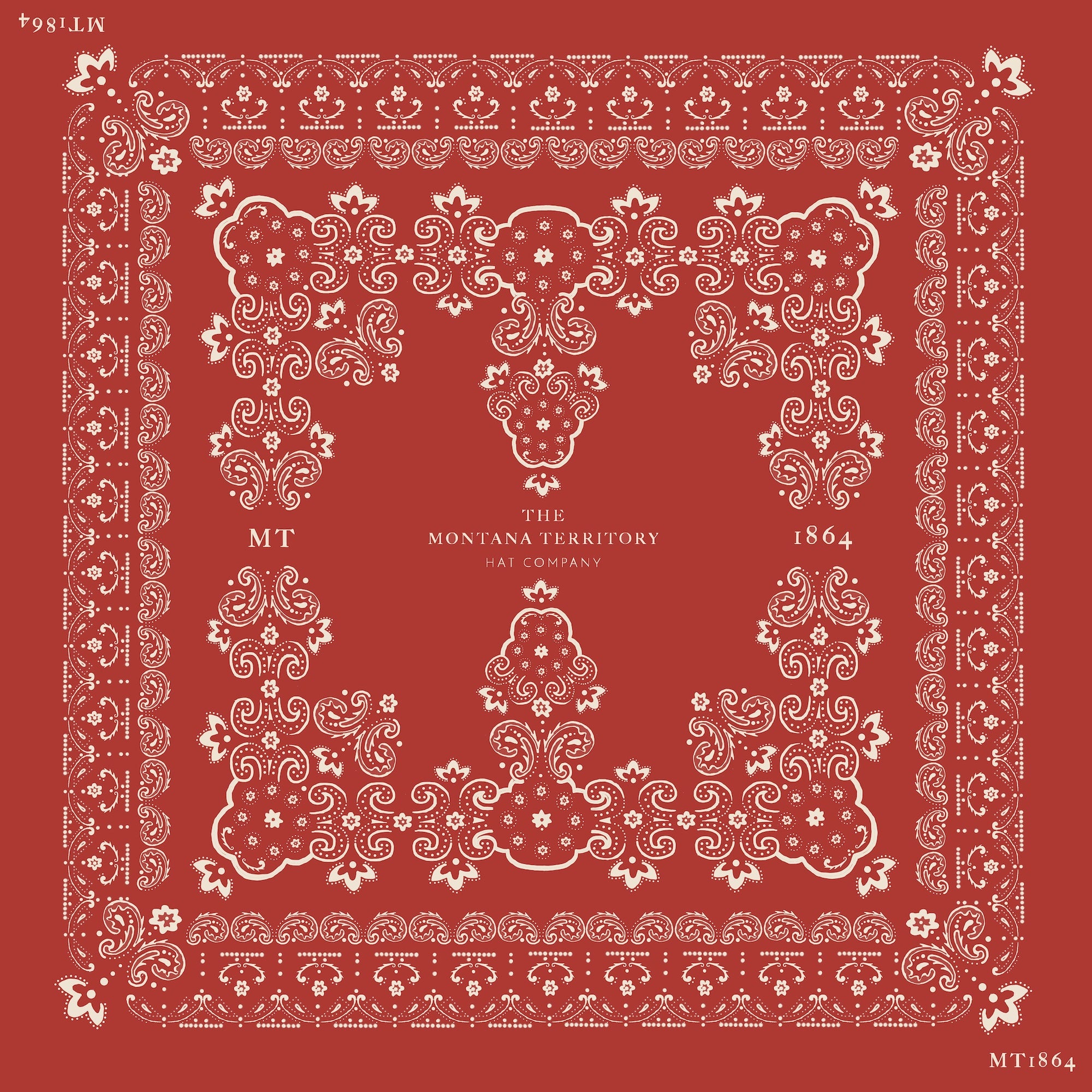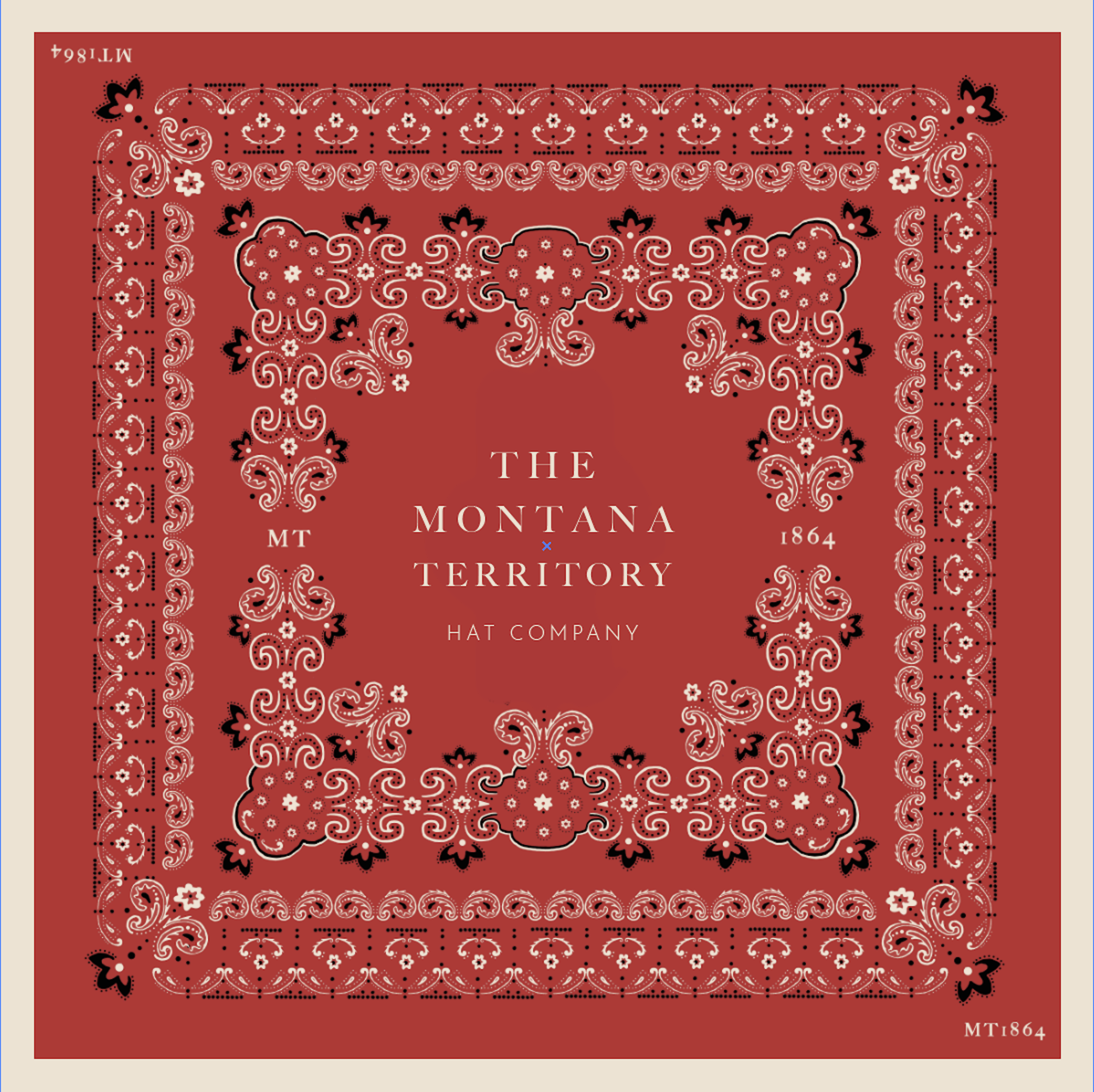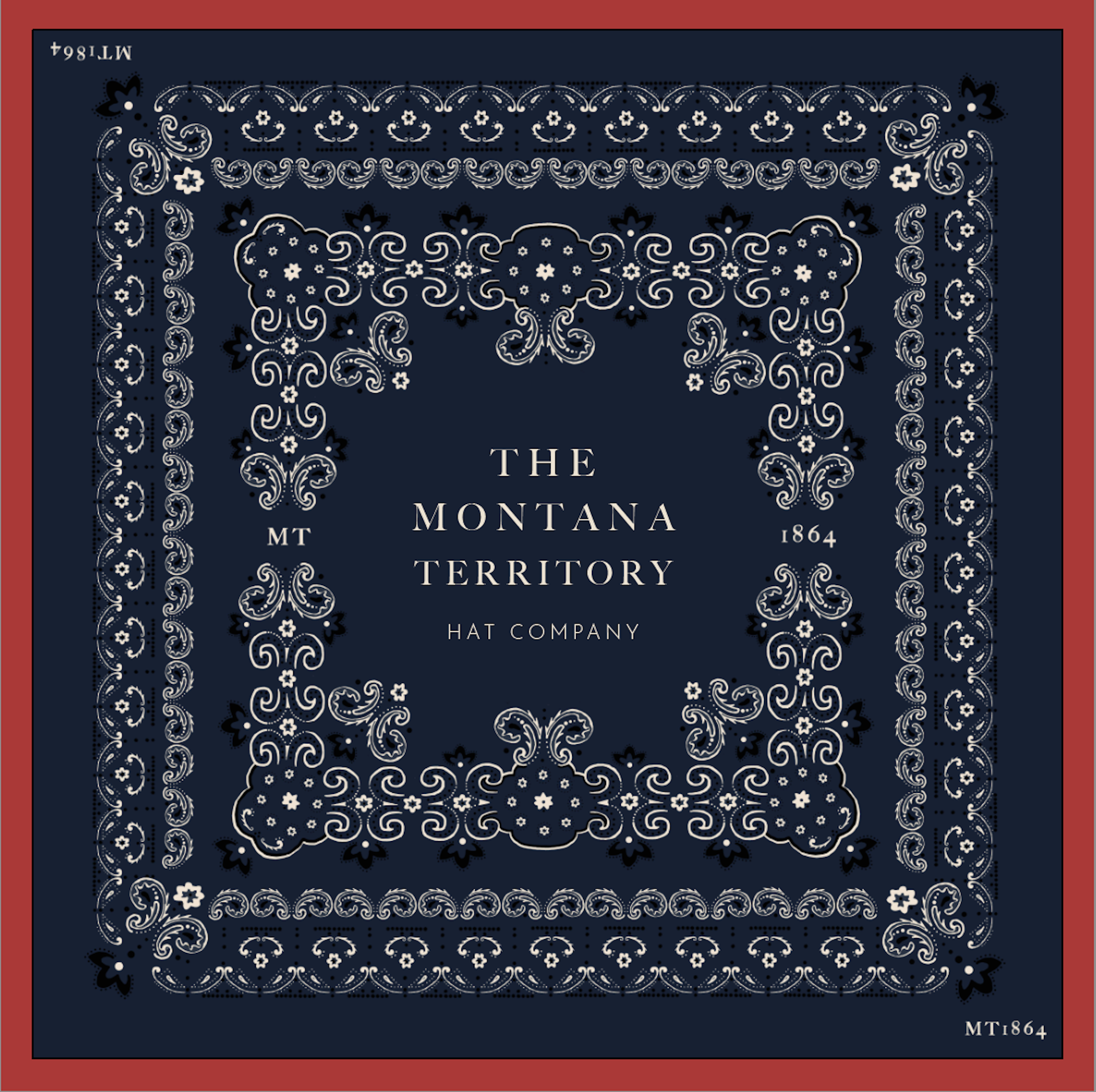WILD RAGS
Wild rags (bandanas, neck rags, neckerchiefs, buckaroo scarfs) have been a staple in the Western culture since the mid-1800s. Born out of necessity, the first wild rags were actually cut squares out of patterned flour sacks and used for added warmth and protection on the dusty trail. Eventually silk became the upgraded fabric of choice. Silk protects against moisture, stays warmer than cotton or wool, and gets softer with age.
As with most elements of the West, form follows function. These little squares of cloth came in handy for many reasons, serving in a pinch as lead ropes, gate closures, dust masks, water strainers, race flags, horse blinders, emergency saddle rigging, sunburn protection, tourniquets, tablecloth, dish towel, or gun cleaning rag. The wild rag might be just about the most versatile piece in a rancher's wardrobe. And if you happen to be an occasional outlaw, they serve as a face covering to conceal your identify in a pinch as well.

